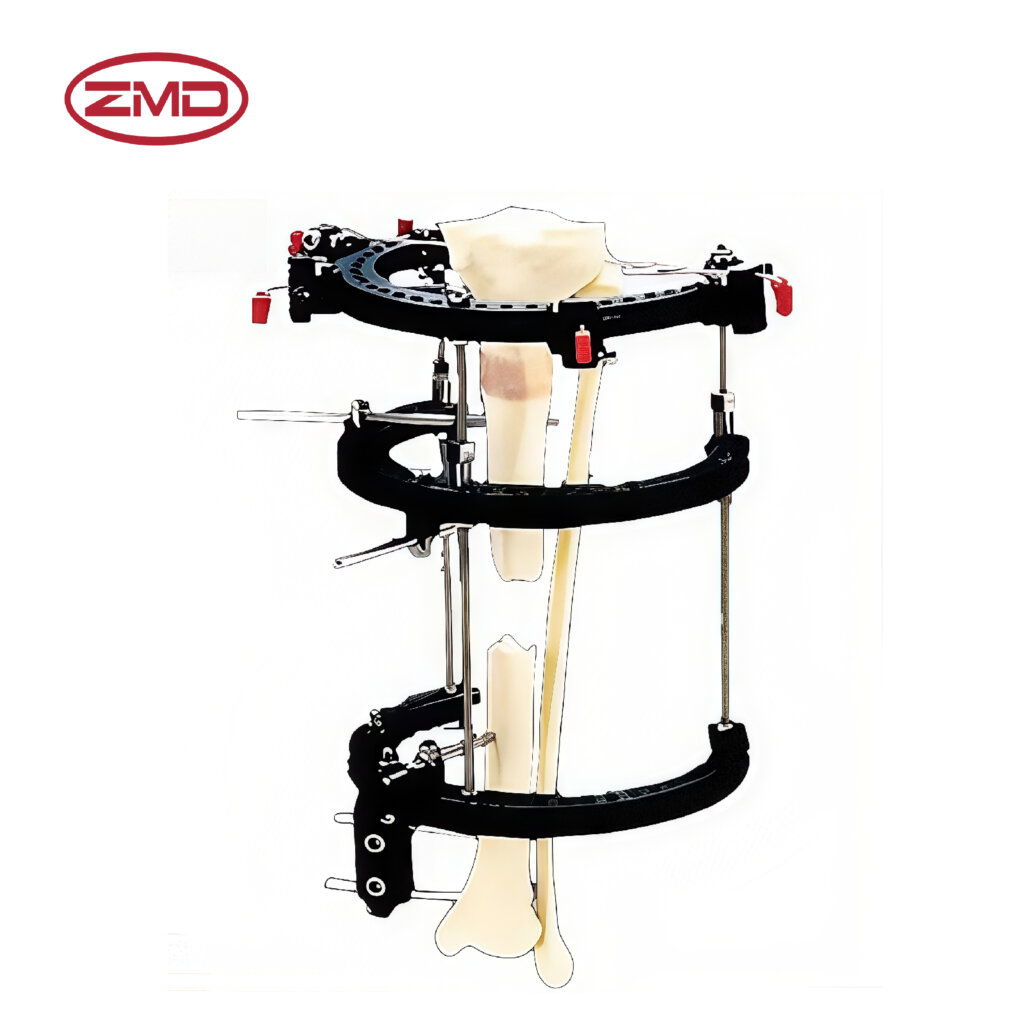
- Home
- About Us
- Products
- Trauma Internal Fixation System
- Spinal Internal Fixation System
- External Fixation
- Artificial Implants System
- Sports Medicine
- Power tools
- VSD System
- Instruments
- Medical supplies
- Blog
- Personnel Profile
- Contact Us
Phone line
| CODE | PRODUCTION | DESCRIPTION | MATERIAL |
| ZL001 | Calcaneal Minifixator | Whole set | Aluminum |
The Calcaneal Minifixator is commonly crafted from medical - grade titanium alloy or high - quality stainless steel. These materials are chosen for their excellent biocompatibility, meaning they can be safely used within the body without causing adverse reactions such as allergic responses or significant tissue irritation. Additionally, their durability allows the device to withstand the mechanical forces exerted on it during the healing process, which can include the patient's body weight and normal daily movements
During a surgical procedure, the Calcaneal Minifixator is attached to the calcaneus bone through the use of screws or pins. These are carefully inserted into the bone by a trained surgeon. The insertion process demands precision to ensure that the fixator is firmly and accurately connected to the bone. This connection forms the basis for the device to provide stable fixation and support for the injured area.
Yes, in most cases, the Calcaneal Minifixator can be adjusted by medical professionals. The adjustability feature is valuable as it enables optimization of the fixation based on the patient's healing progress. For example, as the bone begins to heal and its condition changes, the amount of compression or alignment provided by the fixator can be fine - tuned to better suit the evolving needs of the healing process.
It is suitable for a range of calcaneal injuries. This includes various types of calcaneal fractures, whether they are simple fractures with just one break in the bone or comminuted fractures where the bone is broken into multiple fragments. Moreover, it can also be used for certain deformities of the calcaneus that may result from trauma, congenital disorders, or other causes, helping to correct the alignment and support the bone during treatment.
The duration that the Calcaneal Minifixator remains in place can vary. It depends on multiple factors, primarily the severity of the injury and the individual's healing rate. Generally, it stays in position for a period ranging from several weeks to a few months. The surgeon will monitor the healing progress regularly and make a determination on when it is appropriate to remove the device.
While there may be some initial discomfort associated with having the Calcaneal Minifixator in place, its proper positioning and design are aimed at minimizing pain throughout the healing process. The device is engineered to be as comfortable as possible given its function, and the medical team will also manage any discomfort through appropriate pain management strategies and patient care.
Yes, the Calcaneal Minifixator can be used for both adults and children. However, the size and specific design of the device may vary depending on the patient's age and bone structure. For children, the fixator is often customized to fit their smaller and still - developing bones, ensuring that it provides effective fixation and support while taking into account the unique aspects of pediatric orthopedics
There are several potential risks. Infection is a concern, as with any surgical implant, and proper surgical techniques and post - operative care are crucial to minimize this risk. There's also the possibility of the fixator loosening over time, which could affect its ability to provide stable fixation and support. Additionally, improper bone healing, such as malunion or non - union, can occur if the device is not properly installed or monitored throughout the treatment period.
The Calcaneal Minifixator plays a vital role in the healing process by providing stable fixation. It keeps bone fragments in place, preventing them from moving due to external forces like body weight or muscle contractions. This stable environment allows the body's natural healing mechanisms, such as the formation of a callus and subsequent bone remodeling, to work effectively, facilitating proper bone healing and restoration of function.
Yes, specific post - operative care is necessary. Patients are typically advised to keep the surgical area clean to reduce the risk of infection. They also need to follow weight - bearing restrictions as instructed by the medical team, as improper weight - bearing too soon can disrupt the healing process. Regular follow - up appointments are essential so that the surgeon can monitor the healing progress and make any necessary adjustments to the fixator or the treatment plan.
Oh yeah! I have to mention their payment options and discount offers, which are awesome! Those payment methods are as flexible as moving water and can be chosen freely according to our cash flow situation. And the frequent discounts, like a timely rain, have been moisturizing our financial statements time and again, and have had a rocket-like positive impact on our profits! With ZMD, I feel relaxed and at ease when it comes to purchasing!
Send us a message if you have any questions or request a quote. Our experts will give you a reply within 24 hours and help you select the right valve you want.
Book Now
If you are looking for professional orthopedic medical product solutions, don’t hesitate to contact us now!

We are an integrated manufacturer specializing in orthopedic medical industry, providing high quality and reliable orthopedic medical products to customers worldwide.
Copyright © 2024 ASK Project